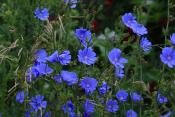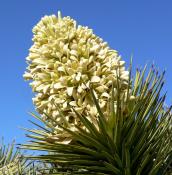Search
Login
Recommended
Ornamental and medicinal plants on the site. Hamamelis: species, cultivation and reproduction
Witch hazel plant is quite rare in our gardens, but in vain, because this shrub is able to decorate the garden with bright flowers and aroma even in winter. Landscape designers often decorate the garden with several species of this shrub, for example, witch hazel blossoms practically all year round - in winter, spring and autumn. In addition, the plant is medicinal and is found in cosmetics with anti-inflammatory and anti-aging effects. How to grow such a miracle on your site? Read this article.
Content:
- Origin
- Types of witch hazel video
- Growth conditions
- Care
- Hamamelis propagation
- Hamamelis as a medicine
- Hamamelis in cosmetology
Origin
The witch hazel shrub came to us from North America, Japan and China. Witch hazel was grown for decorative purposes in European gardens in the mid-17th century, today the plant is present in private gardens in London. Later, witch hazel was widely used in medicine as a means of reducing inflammation, ulcers and stopping blood. Shrubs blooming in autumn come from North America, a plant from East Asia blooms in winter.
Types of witch hazel
Consider the most famous species and varieties of this unusual plant.
Hamamelis Virgininsky is a wide tree-like shrub up to 6 m high, leaves 15 cm long in the autumn turn yellow. Blooms in late autumn with pale yellow inflorescences with a distinct aroma.
Japanese witch hazel is found in nature in the mountainous regions of Japan, a witch hazel flower with yellow petals and a purple bowl appears in January and ends flowering in March. Autumn leaves are painted in yellow, orange and red.
Mossy witch hazel is the highest type of shrub - it reaches 10 meters. Branches grow diagonally from the bottom of the shrub, resulting in the shape of a vessel or vase. Yellow flowers with reddish cups appear in February or March. Petals of a flower, unlike other species, are quite stiff and not twisted.
Hamamelis intermediate is a hybrid of mossy and Japanese shrubs. It reaches a height of four meters; in autumn, the leaves are painted yellow or red. Flowers depending on the variety appear in August, January or March. This species is most often found in gardens and varied varieties.
The Versterstede variety has dark brown leaves, a bush up to 4 m high. Autumn leaves are colored in orange or red. The flowers are bright yellow, fragrant, the bush blooms profusely from February to March.
Varieties Diana, Elena and Primavera bloom from January to March, fragrant Diana flowers of red color in varieties Elena and Primavera have yellow flowers. Green leaves in the fall acquire a yellow and orange color.
Hamamelis Feuerzauber blooms in February and March, abundant inflorescences are orange-red, autumn leaves are yellow or orange.
Witch hazel Pallida blooms even in December, the flowers of bright yellow color for a long time remain on the branches.
Growth conditions
Witch hazel plants grow best on fertile and moist, slightly acidic soil rich in humus with a pH of 4.5 to 6.5. The place under the shrub should be protected from the wind, sunny or semi-sunny, witch hazel can grow in the shade of trees, but in this case the plant will bloom less.
Flowering shrubs will look good against the background of conifers, such as yew or spruce. In addition to conifers, witch hazel can be planted among a glade of cyclamens, snowdrops and anemones.
Hamamelis is planted in autumn, on composted soil and mulch soil, this will not only save moisture, but also protect the young plant from frost.
Care
Watering shrubs in summer is very important, especially in the first year after planting, as abundant watering will contribute to the development of the root system. Witch hazel is quite hardy, but during spring frosts, it is still recommended to cover young plants. Older shrubs (3 years or more) do not need frost protection.
Pruning should begin immediately after flowering, the first reduction is carried out in the second year after planting. Only old and weak branches are reduced, more radical pruning is not recommended for shaping, witch hazel does not tolerate pruning. In general, witch hazel is one of the most unpretentious plants, it does not become infected with diseases, is frost-resistant and easily survives when transplanted.
Hamamelis propagation
Witch hazel propagates with the help of seeds, seedlings and cuttings. However, each of these processes is sometimes time consuming and quite complex. Reproduction by seeds is now mainly used by amateurs and for new varieties. Cuttings carry many requirements. The most convenient solution is to buy ready-made seedlings from reliable sellers.
Hamamelis as a medicine
Hamamelis bark and leaves are used to create tinctures and medicines. The chemical components of the plant help fight skin rashes and insect bites, stop the blood, treat hemorrhoids, diarrhea and general problems with the digestive system. Alcoholic infusion of witch hazel relieves muscle and varicose pain, treats fungal infections.
Hamamelis in cosmetology
Due to the presence of tannins and flavonoids, witch hazel is present in masks, lotions and creams to strengthen and rejuvenate the skin. Shrub leaf extract effectively eliminates inflammation on the skin and swelling around the eyes, cleanses pores. From the leaves and seeds of the plant receive oil, which is used in perfumery.





